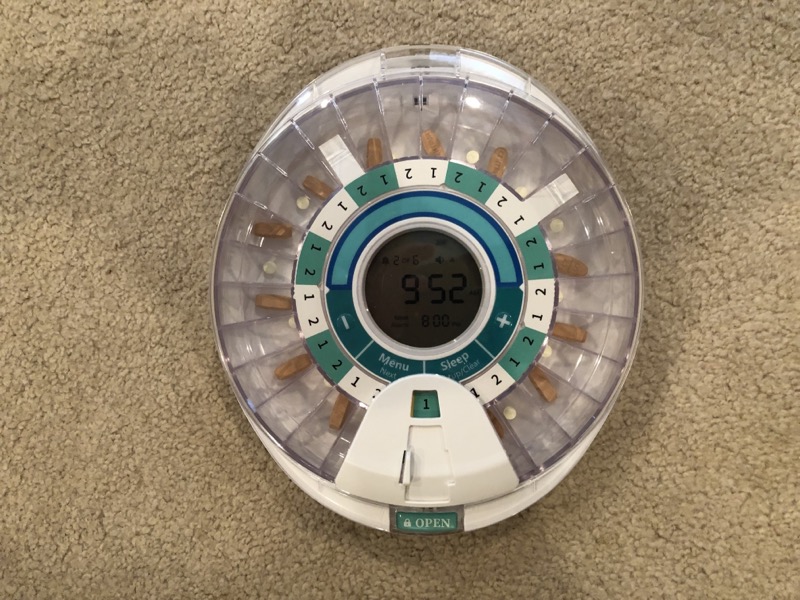
REVIEW – Can the WindTrace Smart Automatic Pill Dispenser accurately automate the often times complex task of scheduling prescription medications throughout the day? In short, yes and no. Read on for a more complete answer to that question.
What is it?
The WindTrace Smart Automatic Pill Dispenser is exactly what it claims to be, an automatic pill dispenser, focused on automating the dispensing of pills throughout the day.
What’s in the box?
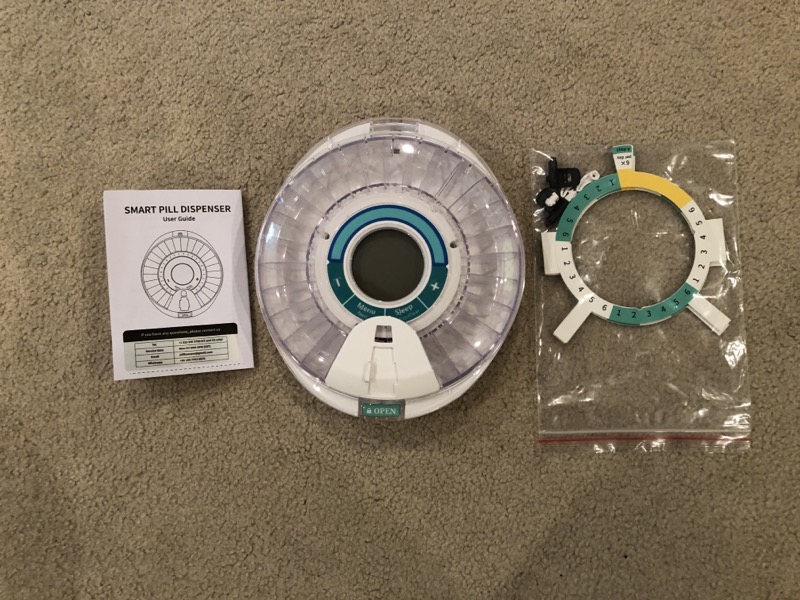
- WindTrace Smart Automatic Pill Dispenser
- Daily Dosage Rings (6)
- Battery Door Keys (3)
- Paddle Locks & Phillips Screws (3)
- 4 AA Batteries
- Instruction Manual – One Sheet, folded in 16 squares (English side, German side)
Hardware specs
- Dimensions: 20.6 x 23.3 x 5.7 cm
- Weight: 626g
- Product Name: Smart Pill Dispenser
- Where to use: Limited to indoor use
Design and features
As you can see in the picture, the WindTrace Smart Automatic Pill Dispenser is circular-shaped with 28 slots to hold pills. These 28 slots can be configured to contain from 1 – 6 pill distributions / day. These varying distributions are accomplished by utilizing the corresponding included Daily Dosage Rings along with the programming of an associated alarm for the time of day each pill distribution should occur. To be honest, I was not a big fan of the Daily Dosage Rings as they are just laid on top of the pill tray, just under the lid, without any kind of adhesive to hold them in place. The tabs which extend into the pill trays which function to hold the tray in place when it turns just get in the way when removing pills from the associated slots. Thankfully there are only two per ring.
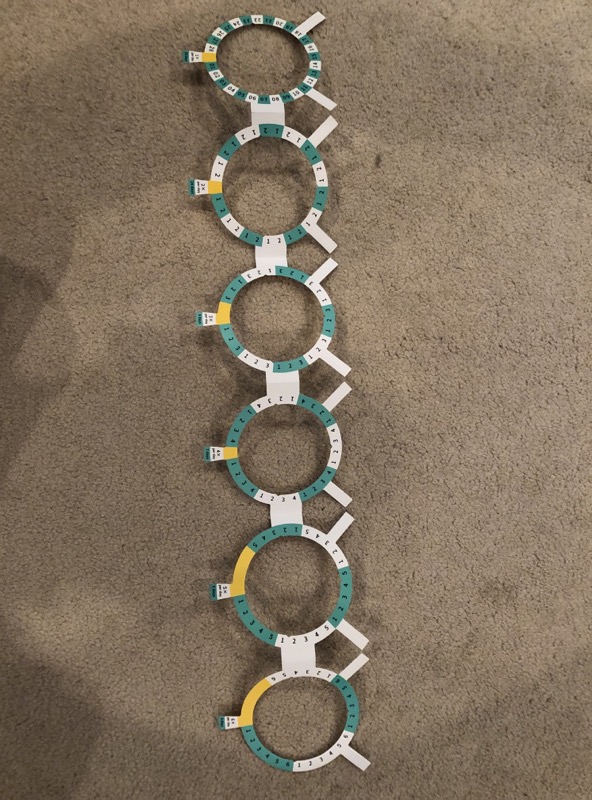
The battery-powered unit communicates wirelessly with the free Pillcalendar App, available both on the Apple App Store, and Google Play. I downloaded and used the iOS version of Pillcalendar App for this test.
Once the unit has been programmed and filled with pills the unit has the ability to sound an audible alarm (programmable loudness, but not no alarm and beep sequence), flash the light on the top of the unit, and most of the time (see performance section below) advance the pill tray to the next pill slot, for each alarm that is programmed. The alarm is silenced by picking up the box and tilting it completely over and then back. If you slide over the pill slot cover after tipping it, the pills will empty out of that slot, either into your hand, or other container. I felt it was easier to immediately silence the alarm, and then open the slot, tilting it again to obtain the pills that lie within.
In the event you do not have convenient access to the Smart Automatic Pill Dispenser when a pill distribution event is in process, the pillbox has a snooze-like logic, so the box does not continually alarm forever. This logic was shared with me when I was working with tech support and is as follows: According to the alarm you set, the system will repeatedly flash the light bar, sound the alarm (5 beep sequences each time) with an interval of 8 seconds, and repeat the above-mentioned event after 90 seconds. This will cycle about 10 times for the next 15 minutes. After that, the alarm will no longer sound if the alarm is not silenced by turning over the device. In addition, if you have the app loaded, a notification will occur for each alarm set on your phone as well.
Setup
Depending on the method used, the setup of the WindTrace Smart Automatic Pill Dispenser is straightforward. But before I get to that, you need to install the batteries (4 AA, included), and select the Daily Dosage Ring which corresponds to the number of distributions needed per day. It is typical for the battery door to be secured with a small screw. However, in this case, they use a non-standard triangular fastener, along with a tool to lock and unlock the battery door. The tool is storable on the bottom of the unit, and as mentioned in the what’s in the box, there are two spares. I am not sure including spare non-standard battery door fasteners is better than just using a Philips head screw. That said, it is nice to have the ability to open the battery door, assuming the battery door tool is still attached to the bottom of the unit, without having to head to the toolbox to locate a Philips head screwdriver.
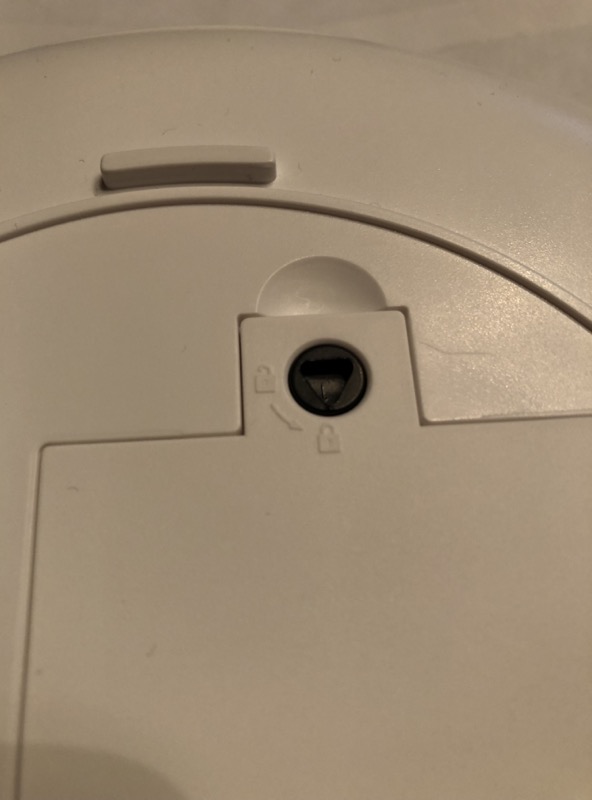
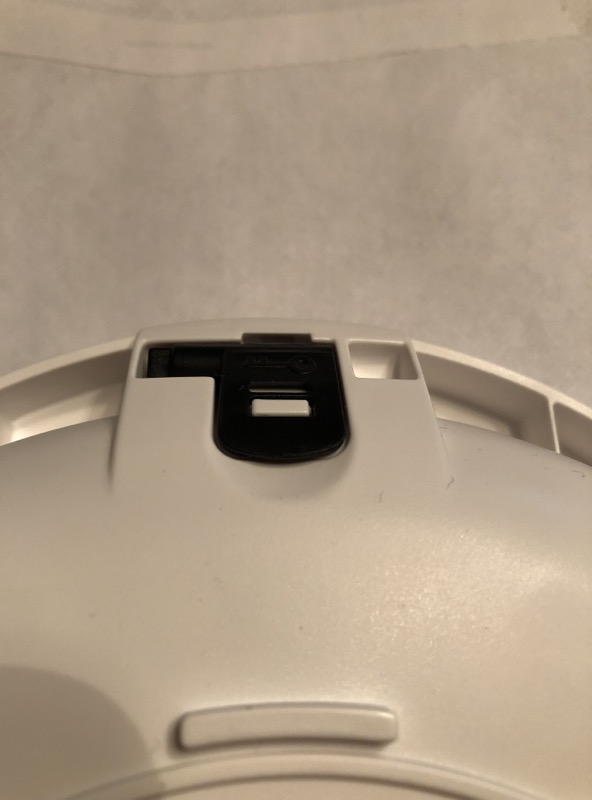
As was mentioned earlier, the WindTrace Smart Automatic Pill Dispenser system supports disbursements from one to up to six disbursements per day. Since I take pills in the morning and evening, I selected the 2 disbursement Daily Dosage Ring for my testing.
Before I get further in this review, the mindset I wanted to adopt when looking at this was from the perspective of someone who does not use cellphones, and thus would not benefit from the features of the Pillcalender App. This required me to do a complicated, but doable, button dance between the various buttons on the front of the device, accessible once the Pill Box lid has been raised, allowing access to the four (-, Menu, Sleep, +) buttons, to set up the time of the day, and both alarms for morning and night distributions. This was not hard, but of course is much easier using the Pillcalender App.
When using the App, once the App is paired with the unit via Bluetooth, the information flows efficiently to the actual Pill box device every time any kind of change is made. You just have to be in Bluetooth range and connected for this to occur. The setting up of the App is easy. I skipped the registration, set up the first alarm with three pills. On the third pill, I associated a picture of the pill with it. A picture of the instructions for the prescription could also be associated here. Setting up the second alarm, copied everything from the first, and allowed me to set the alarm time. Note each pill can contain the medication name. You can of course modify each alarm independently but given that sometimes you take the same pill multiple times a day, this strategy is as good as any for creating additional distribution alarms.

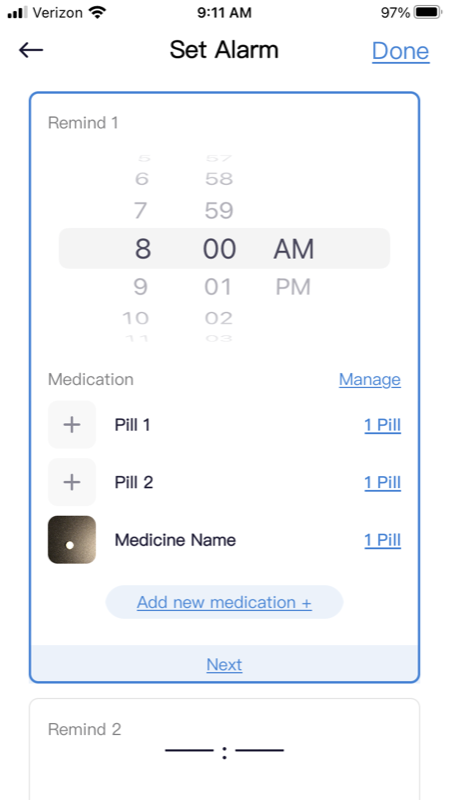
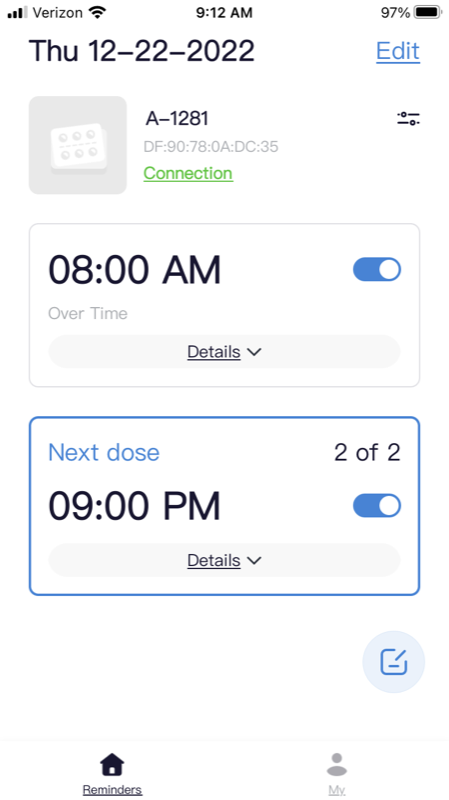
Performance
Like many of us, I had the task of monitoring the daily pill intake of an elderly family member who does not use a smartphone and was at the time fighting cancer. In addition, she was coming off a minor stroke which further complicated her pill routine and forced me to depend on a neighbor to serve up the pills four times a day which I had already distributed into one of those 4 times per day weekly pill boxes. Therefore, while reading the following keep that in mind to aid in the understanding of why I say what I say below.
Again, to keep things simple, I tested the device with two distributions per day. I take four pills in the morning, and seven pills in the evening. Both days have pills of varying sizes. The pill container had no issues holding the pills that I had. That said, I do think it can be a kind of a challenge to fill the container as the slots are very close to each other, pie shaped, and with the aid of Daily Dosage Pill ring, there still is the challenge to make sure the correct slot is being filled with the correct pills. The Daily Dosage Ring does make it easy to keep things straight and was very easy with 2 distributions per day. I would expect it to be only a little more difficult, the more distributions that exist per day, up to the max of six the unit can handle.
If a mistake is made, it can be a challenge to get a pill out, and one can unintentionally tip it over without first putting the lid back down and lining up the slot you wish to dump under the slotted door so you can dump out the mistake to correct. I found that filling a weekly 2 distributions per day pill tray for the entire week, and then using a funnel to transfer all the corresponding day’s distribution of pills from the weekly pill tray into the Smart Automatic Pill Dispenser’s pill tray reduced the chance of error considerably. Should you make a mistake, you would still need to do what is mentioned above, but at least you are not getting one pill in the wrong slot and attempting to try to fish that pill out without disrupting the pills in any of the adjacent slots.
Importantly, should you have a change in your daily prescriptions, it could be a challenge to make the necessary modifications to pills that are already in the unit depending on what the change is of course. Adding a pill at a distribution time would not be that bad. Removing one could be considerably harder. Adding an additional dispense period, for example going from 2 to 3 per day, which would require a change to the Daily Dosage Pill ring, would be very troublesome, to the point of just waiting until the tray is empty and refilling at that point. This may or may not be an option, depending on the change that is being accounted for which is why I mention it specifically here.
Finally, I come to the point where the device had a serious issue, at least in my opinion. The Smart Automatic Pill Dispenser had a somewhat random failure in that sometimes it would not advance the pill tray to the next dose. The alarm would go off, and the light would blink, but for whatever reason, the pill tray would not advance. The worst part is that I could not pinpoint the scenario when this would occur and believe me I tried. What follows is a table of the device’s performance with respect to the alarm, blinking light, auto advancement of the pill tray, and thus the need to manually advance the tray at times, something that I also did not like having to do. Looking at the table is very straightforward and as one would think, green is good, and red is bad.
As you can see in the image, I had this issue far too often to be able to rely on the device to automatically advance the tray at the alarm time. In fact, I had the issue before I started formally recording the behavior. I built this table in the hopes of understanding when the issue occurs in addition to communicating the issue with product support. When the issue does occur, you have to open the lid by first unlocking the lock, hitting the ‘+’ button to manually advance the tray to the next slot, closing the lid, locking it, and then dumping out the pills for that period. In my opinion, anytime the lid is open on the tray which contains pills, there is a risk of spilling the pills. Thankfully, I still have very good control of my hands, but for someone who is considerably older, this could be a real challenge with catastrophic results.
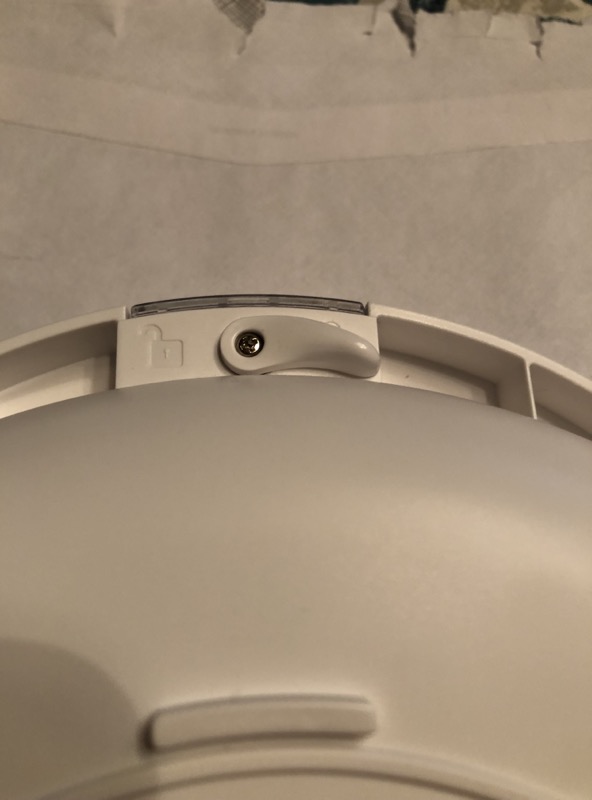
In all encounters with the support team, I felt the response times for my queries to them were reasonable. You could tell that it was an offshore team that I was working with as there was the obligatory ½ day delay in getting a response back from them depending on when the email was sent of course. We exchanged 44 emails in total dealing with this issue, containing parenthetical descriptions, images and even videos of the device’s behavior completely documenting the issue.
Coming from a background in software development, I am confident that there is a firmware (software) bug in the device that is causing this issue. After many emails, I was led to believe that the second device that was shipped out to me indeed had a firmware upgrade, however, comparing the firmware version of the second device with the first one did not show any kind of change. I was really disappointed that the second device had the same software in it as the original one if you notice I identified where in the test the new unit was brought online, and as you can see, the issue still persisted. You can’t fix a software bug without modifying the actual software. Shipping a device with the same software, under the impression that it has been updated is just not the right thing to do. Had that second unit had a software upgrade and behaved perfectly could have resulted in a recommendation for this product.
What I like
- Nice integration with the phone app.
- Pill slots are big enough to hold larger pills
What I’d change
- Daily Dosage Pill rings need adhesive to hold them into place.
- Pill Tray does not always rotate to next position. (firmware bug)
- Alarm needs to be able to be completely silenced.
- Allow App to advance the tray vs having to open the lid to perform that task.
Final thoughts
To restate, the random failing to advance the tray issue, given my original testing frame of mind is a showstopper for me. If the user really depended on the machine advancing to the correct slot upon the alarm, they could be confused to find no pills there after the alarm has sounded and 15 minutes have elapsed. They could actually think that they already took them. I just do not think for a device like this that this kind of failure is acceptable at all. At least to me, it is not. Hopefully, an upgraded version of the firmware will address this issue. I am sure it is just a minor logic error.
For informational purposes, both units I was sent reported version 202 using the on device self-test button dance given to me by product support. The version is displayed as 2.0.2 on the App. I would be interested if anybody else experienced this issue containing version 202 of the software or earlier.
Price: $97.99
Where to buy: Amazon
Source: The sample of this product was provided by WindTrace.

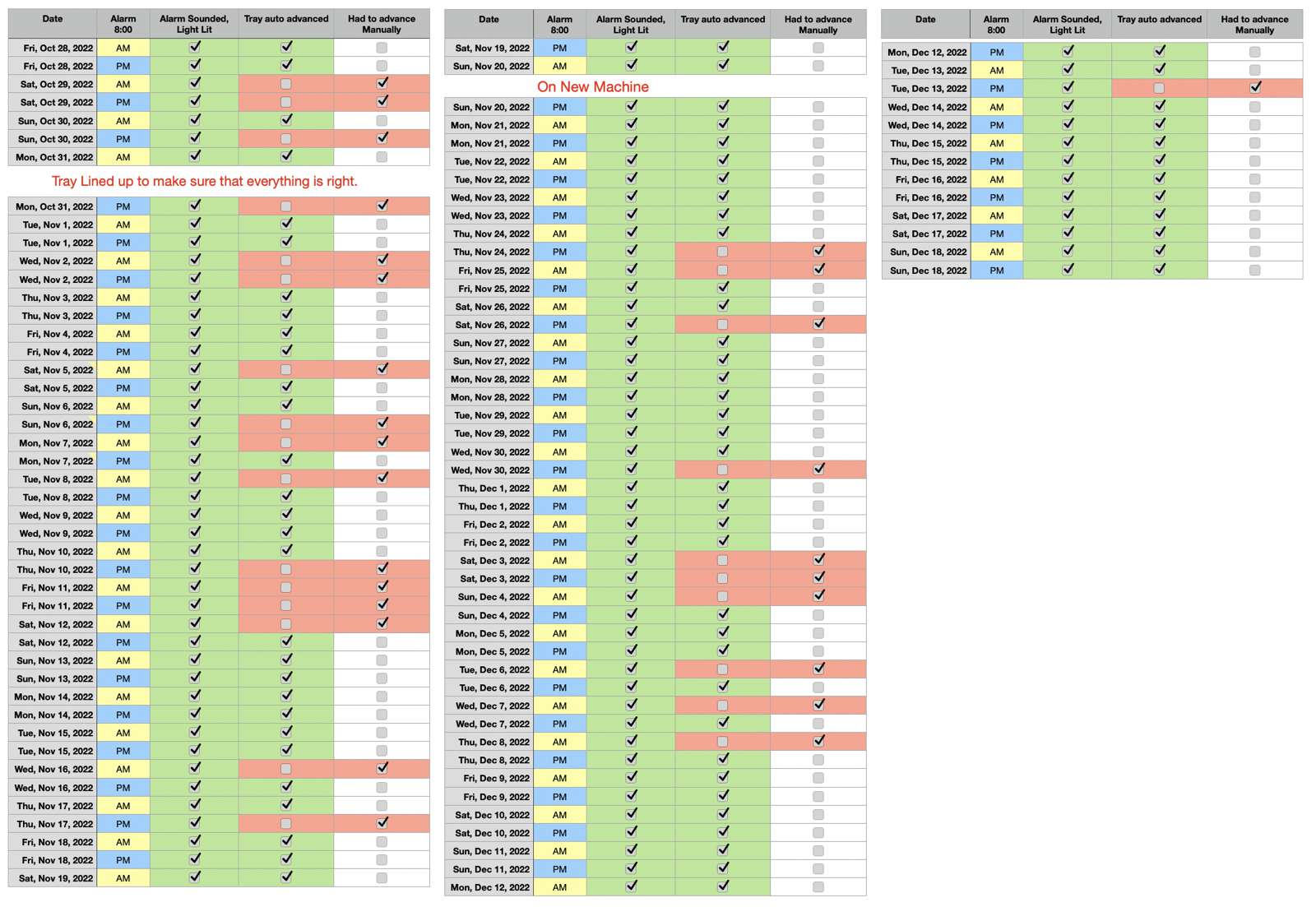


Gadgeteer Comment Policy - Please read before commenting
My new dispenser started skipping every other time after two weeks. It correctly alarms and turns at the 9:00pm time. The 8:00am time it does not turn to the next location as it once did. I don’t know if removing the ring to refill requires placing at the start position or not.
Sorry to hear that current pill containers are still not advancing from time to time.
If my memory serves you can replace the ring anywhere as long as you make sure it is lined up with the advancement mechanism.
Is this set up so that you can open the current slot and pour out that dose of pills BEFORE the alarm goes off? For example, if my programmed time for pills is 9:30 am, but I need to leave home at 9:00 for an appointment, can I take that dose early?
Kay,
You can advance the unit with the + key at any time, but as I recall, the – key does not drive the unit backwards, at least with the version of firmware that I had. So if you advanced it early, it would advance again at that next programmed time, and then again during the next programmed time it would thus in effect skip your next time to take pills if that makes sense. Stating that, if my memory serves you could lift the ring and reposition it such that it is lined up to the correct slot, but that is a completely manual thing.